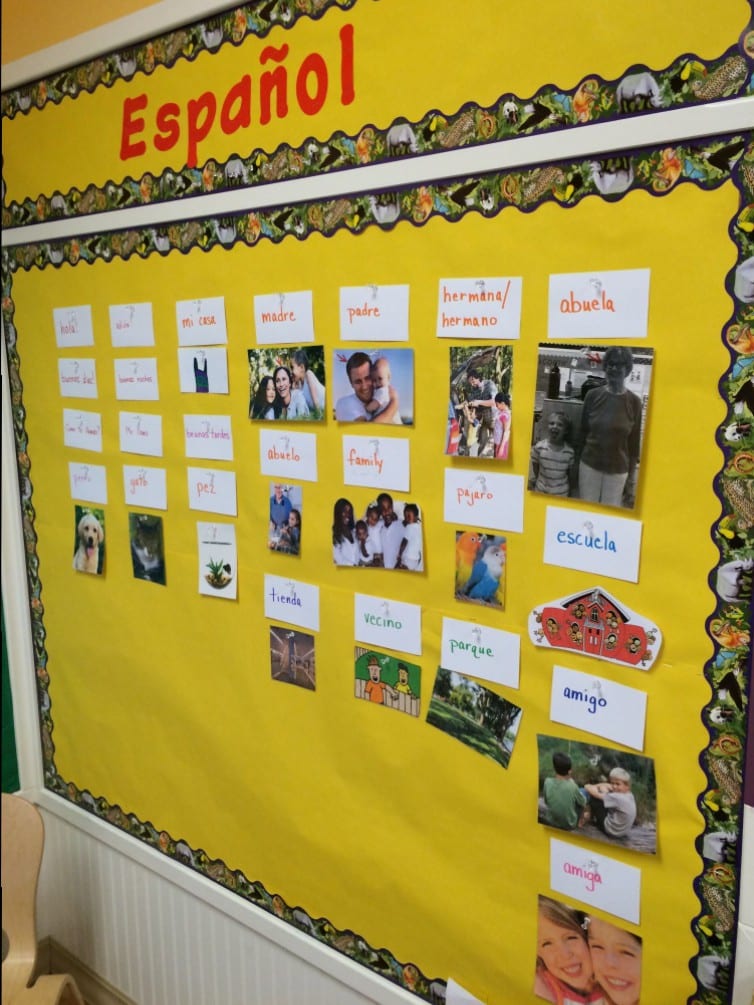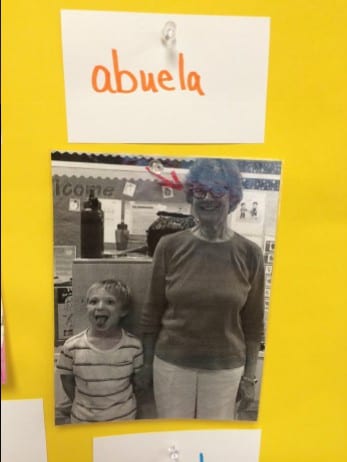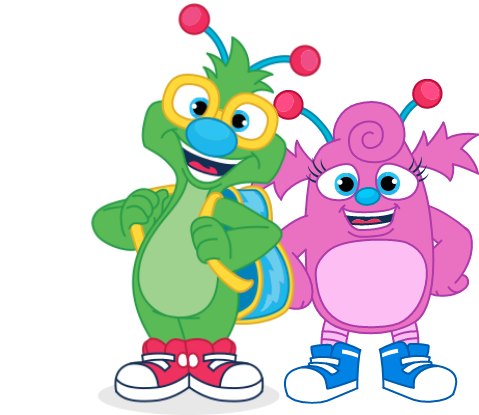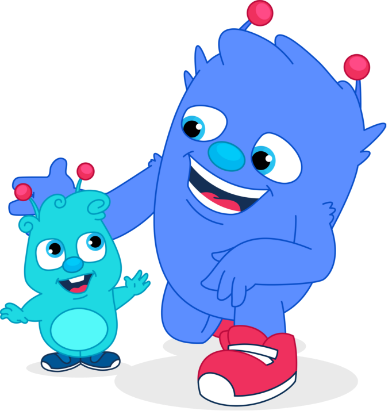December 2, 2014
Introductory Spanish in Early Childhood Classrooms? Si!
Not so long ago, I remember sitting on the steps of my host family’s home in Puebla, Mexico with my two-year-old host brother, Sergio. My Spanish was far from  fluent and his native language was just developing, but we found a way to communicate. He joined me on the concrete step, just a few feet from the narrow, bustling neighborhood street that was bursting with noises, colors, smells, and language. The tamale man would push his cart singing “tamales! tamales! tamales!” while neighbors waved and shouted their hellos from across the street. Cars passed furiously every few seconds prompting Sergio to yell out their colors, creating a new and exciting game for him to invite me to play. And we did. During my three months there, we played this game almost every day – sitting on the step smiling, laughing, and shouting out colors together.
fluent and his native language was just developing, but we found a way to communicate. He joined me on the concrete step, just a few feet from the narrow, bustling neighborhood street that was bursting with noises, colors, smells, and language. The tamale man would push his cart singing “tamales! tamales! tamales!” while neighbors waved and shouted their hellos from across the street. Cars passed furiously every few seconds prompting Sergio to yell out their colors, creating a new and exciting game for him to invite me to play. And we did. During my three months there, we played this game almost every day – sitting on the step smiling, laughing, and shouting out colors together.
Here at Doodle Bugs! we include introductory Spanish to children and families as part of our Bravo! Curriculum. Have you ever wondered why? Have you ever thought that it may cause confusion? I assure you – it’s much more than learning a few vocabulary words to show off for mom and dad. Exposure to these new and interesting words boosts linguistic skills, and also has a positive effect on cognitive and creative abilities as well. Let’s not forget that learning words and phrases that are everyday language in another culture is a way of building acceptance and appreciation for others.
- Benefits: Brain research suggests that young children have the capacity to learn multiple languages simultaneously and that they do not experience
 confusion or delay in either one. Other studies have found that learning a second language actually stimulates brain growth. And if you’re still not convinced, consider the fact that these skills are relevant to the demands of traditional schools, colleges, and future careers. While it seems like those feats are very far away for a toddler who is two, early exposure is important and valuable.
confusion or delay in either one. Other studies have found that learning a second language actually stimulates brain growth. And if you’re still not convinced, consider the fact that these skills are relevant to the demands of traditional schools, colleges, and future careers. While it seems like those feats are very far away for a toddler who is two, early exposure is important and valuable.
- Adult Brain vs. Child Brain: It’s important to note that a child’s mind is four times more active than an adult’s. As caring adults, we often overthink the process of how children learn, forgetting that a child’s mind works much differently than ours. While adults may sometimes become confused with multiple pieces of information because we have been conditioned to categorize content in our mind in a particular way, children often do not have the same limitations.
- Creative Ideas for Implementation: Aside from engaging children in songs, games, and conversations as suggested by your Bravo! Curriculum, what are some other ways to integrate Spanish into your classroom? One veteran teacher shared that early in the year as we introduced greetings, she took photos of her children waving hello and goodbye and then posted them near her circle time bulletin board with captions of the action in both English and Spanish.
 Another teacher shared that one of her toddlers has recently shown mastery of all the colors in Spanish. She said “I’m not sure how this happened, it’s not like we drill the children on it. We just sing songs and use the Spanish color words as they come up during art, when we read, and when we and play.” It truly is that easy. Simply offering another interesting way to describe an object or picture is enough, and it is absorbed best when the moment is natural and meaningful.
Another teacher shared that one of her toddlers has recently shown mastery of all the colors in Spanish. She said “I’m not sure how this happened, it’s not like we drill the children on it. We just sing songs and use the Spanish color words as they come up during art, when we read, and when we and play.” It truly is that easy. Simply offering another interesting way to describe an object or picture is enough, and it is absorbed best when the moment is natural and meaningful.
As always, please share any creative ideas you have found successful in your classroom! Use the comments space here or email Jennifer.horner@doodlebugs.com

 1.866.668.5111
1.866.668.5111  6:30 am - 6:00 pm
6:30 am - 6:00 pm 
 Give a Happy High Five!
Give a Happy High Five!


